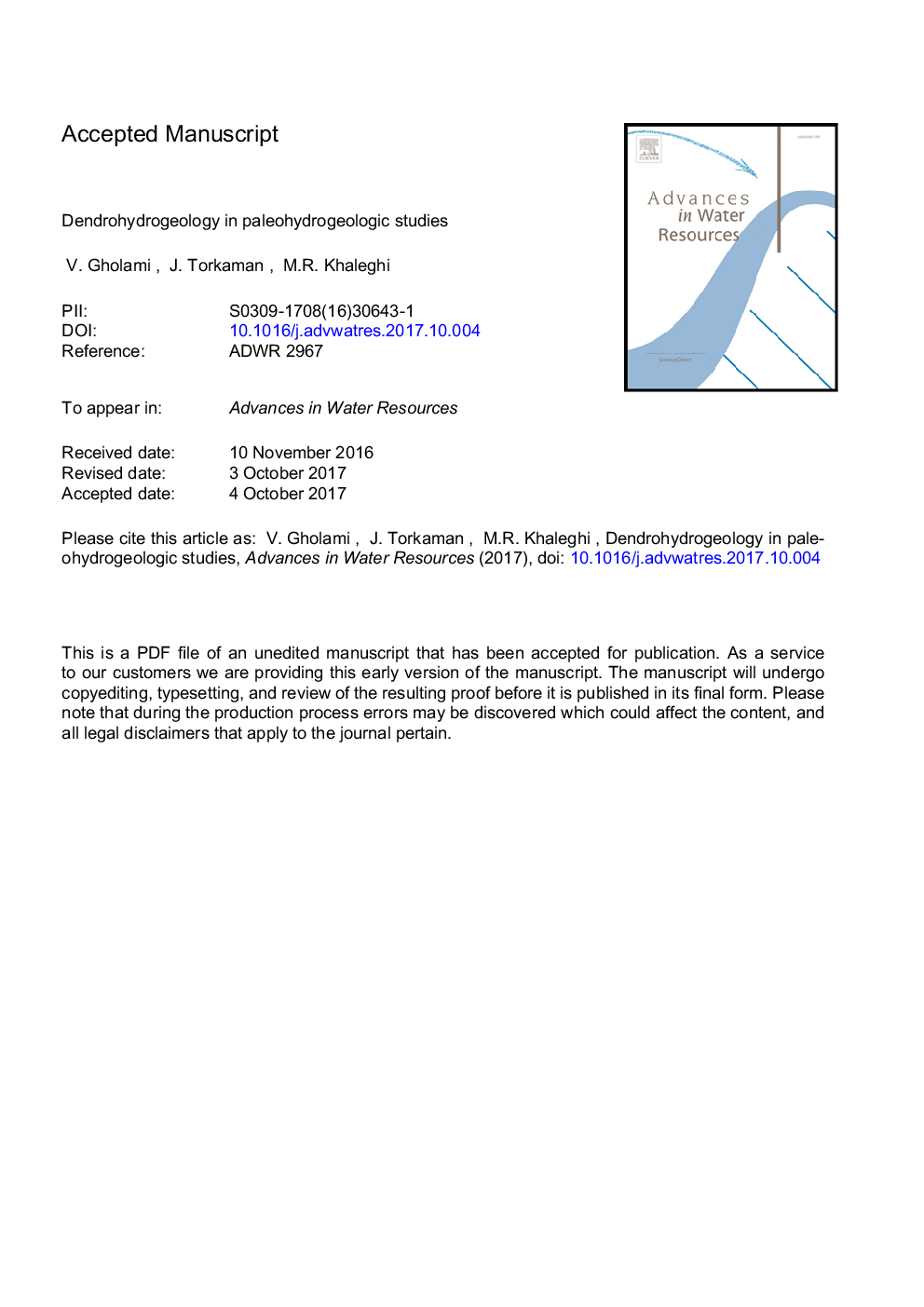| Article ID | Journal | Published Year | Pages | File Type |
|---|---|---|---|---|
| 5763649 | Advances in Water Resources | 2017 | 35 Pages |
Abstract
Dendrohydrogeology can be used to simulate historical groundwater depth, water table drawdown, groundwater recharge and piezometric lines. We simulated paleohydrogeologic conditions via tree-rings and vessel chronologies using an artificial neural network (ANN) in the alluvial aquifer of the Caspian southern coast of Iran during the past century. Tree-ring width, vessel features, secondary piezometric well data, and precipitation from different sites within the study area were evaluated. After cross-dating, standardization and time series analysis, the relationships between tree-rings and vessel chronologies with groundwater depth were defined and simulated. Additionally, paleohydrogeologic records during the past century were simulated. The results generally demonstrate that tree-ring width is a better index than vessel features. However, we obtained the most exact groundwater depth modeling results by using the combination of tree-rings and earlywood vessel diameter from periods of low precipitation and groundwater fluctuations and significant temperature fluctuations. We also found that dendrohydrogeology has more applicability in groundwater modeling in areas where groundwater depth fluctuates 10-20â¯m below ground surface (based on root depth and water access). Moreover, using the simulated groundwater depths, piezometric lines in 1927 and 2000 (the years with maximum natural recharge and maximum drawdown respectively) were extracted using an interpolation technique and Geographic Information System (GIS). Finally, we suggest applying dendrohydrogeology for paleohydrogeologic modeling in alluvial aquifers.
Related Topics
Physical Sciences and Engineering
Earth and Planetary Sciences
Earth-Surface Processes
Authors
V. Gholami, J. Torkaman, M.R. Khaleghi,
